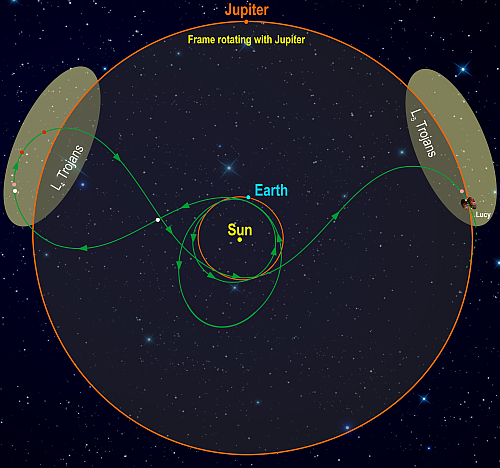The only rocket stage recovered during the 1960s space race returns to Florida
A section of the Gemini 5 Titan rocket first stage that was recovered by chance right after its launch on August 21, 1965 has now been moved from storage in Alabama to be put on display at the Cape Canaveral Space Force Museum.
The artifact, which encompasses the upper portion of the Titan II rocket’s first stage, flew with the vehicle from Launch Complex 19 at Cape Kennedy (today Cape Canaveral) in Florida for the first two and a half minutes of flight, reaching about 50 miles high (80 kilometers) before its two-nozzle engine exhausted its propellant supply. Unlike most rockets, which jettison their first stage before firing their second stage engine(s), Gemini-Titan “fired in the hole,” igniting the upper stage before separating from the first.
The Titan II first stage then plunged back to Earth, impacting the Atlantic Ocean off the coast of Bermuda with no plans for its recovery. It was only by happenstance that a U.S. Air Force plane spotted the segment floating in the water, which led to a U.S. Navy destroyer, the U.S.S. Du Pont, hauling it out of the ocean and back to shore.
Whether the surviving segment, which housed the booster’s oxidizer tank, tore apart from its fuel tank and engine section during the tumble back to Earth or on contact with the ocean is unknown. The lower section of the stage presumably sank to the seafloor.
Until the shuttle started flying in 1981, this booster section was the only first stage recovered from any American rocket launch. The rocket itself had lifted Gordon Cooper and Pete Conrad into orbit, where they spent a then record eight days, proving humans could survive in space long enough to get to and from the Moon.
Lots of pictures at the link. More pictures here.
A section of the Gemini 5 Titan rocket first stage that was recovered by chance right after its launch on August 21, 1965 has now been moved from storage in Alabama to be put on display at the Cape Canaveral Space Force Museum.
The artifact, which encompasses the upper portion of the Titan II rocket’s first stage, flew with the vehicle from Launch Complex 19 at Cape Kennedy (today Cape Canaveral) in Florida for the first two and a half minutes of flight, reaching about 50 miles high (80 kilometers) before its two-nozzle engine exhausted its propellant supply. Unlike most rockets, which jettison their first stage before firing their second stage engine(s), Gemini-Titan “fired in the hole,” igniting the upper stage before separating from the first.
The Titan II first stage then plunged back to Earth, impacting the Atlantic Ocean off the coast of Bermuda with no plans for its recovery. It was only by happenstance that a U.S. Air Force plane spotted the segment floating in the water, which led to a U.S. Navy destroyer, the U.S.S. Du Pont, hauling it out of the ocean and back to shore.
Whether the surviving segment, which housed the booster’s oxidizer tank, tore apart from its fuel tank and engine section during the tumble back to Earth or on contact with the ocean is unknown. The lower section of the stage presumably sank to the seafloor.
Until the shuttle started flying in 1981, this booster section was the only first stage recovered from any American rocket launch. The rocket itself had lifted Gordon Cooper and Pete Conrad into orbit, where they spent a then record eight days, proving humans could survive in space long enough to get to and from the Moon.
Lots of pictures at the link. More pictures here.









